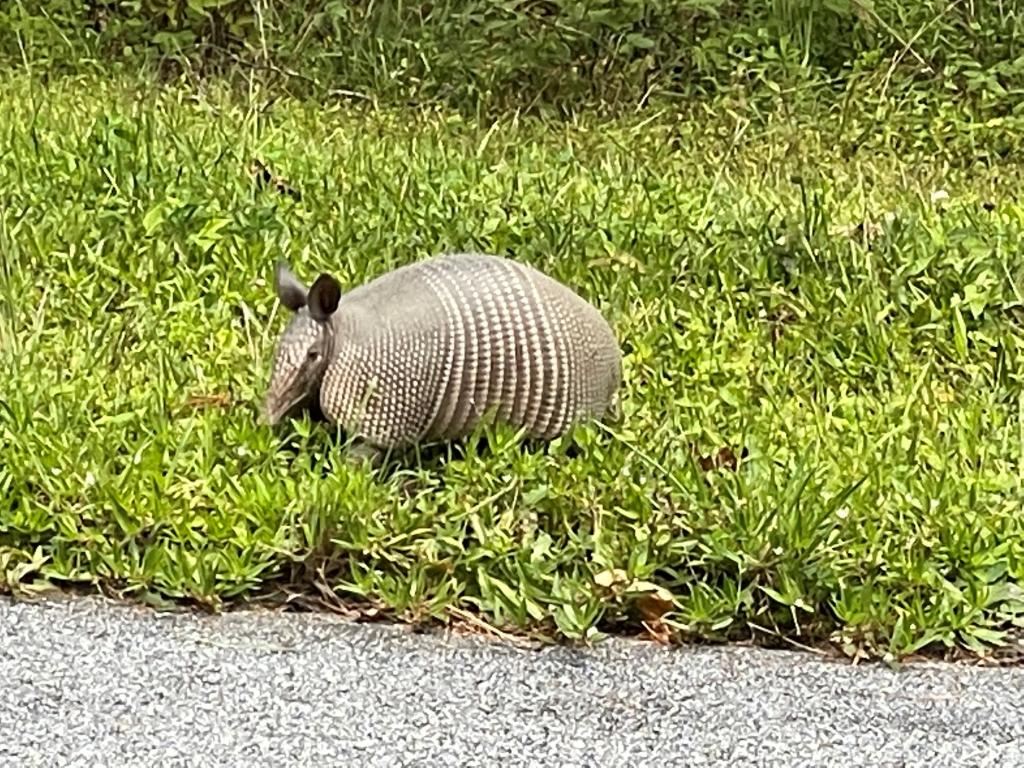|
| Distribution |
In NC, now (2023) has been reported nearly throughout the state. However, mostly in the southern mountains and the southwestern Piedmont, from Avery County southeast to Gaston County. There are numerous photo records (65 on the iNaturalist website as of January 2022), mostly in the southern mountains.
This is a somewhat tropical species, extending from Mexico northward to KS and southern NC. The species is slowly expanding its range northward, and is a relatively new species to NC. The advance into NC actually appears to be more from the southwest (northern GA and northwestern SC) than directly north from SC, based on the relatively few records from east of Gaston County. |
| Abundance |
Now uncommon in the southern mountains, especially close to the SC and GA state lines. Very rare to rare elsewhere, being least numerous toward the coast, where a number of counties lack records (as of November 2023). A few years ago, the species was considered by the N.C. Natural Heritage Program on its Watch List, with an SU (Uncertain) rank; however, with the clear increase in numbers, that program has taken the armadillo off of its Watch List and given a State Rank of S3. |
| Seasonal Occurrence |
Generally active all year, but apparently limits its above-ground activities in winter, as the Carolinas are at the northern edge of the range. |
| Habitat |
Requires sandy or other soft soils for its burrowing and foraging activities. Mostly found in open, sandy woods and brushy fields, but can occur in bottomlands and open fields. Tends to avoid areas with clay-like soils. |
| Behavior |
This is a unique animal north of Mexico, as no other species in the United States has armor like it. They are mostly nocturnal in the warmer months, but can be abroad in daylight in winter. They have poor eyesight and can be fairly easily approached, but can quickly scurry away, at times quickly digging a hole to escape. Most of their time is spent in burrows, deep into the soil, with a large chamber for nesting. Armadillos give birth to four identical young, all of the same sex, a feature found only in a few species of armadillos, but nowhere else among mammals. |
| Comments |
Lee et al. (1982) state "Although armadillos are not established in North Carolina, a modest number have found their way into the southeastern part of the state where they have been released by interstate travelers who discover that the unique pets they captured in Georgia and Florida can claw their way through boxes, bags, and other containers. Most winters are too severe for armadillos to survive this far north. We include this species in these accounts simply to clarify its status." As mentioned above, its status in the state is unsettled. Twenty to thirty years ago, it might have been called an Introduced species; but there are many records now that certainly relate to animals moving northward out of SC and GA, and thus the species is clearly an official member of the state list. Personnel at the N.C. Wildlife Resources Commission are concerned about armadillos digging holes in yards and thus damaging personal property. In fact, as of August 2013, the Wildlife Resources Commission "allows armadillos to be hunted year-round with no bag limit. Armadillos can be trapped during the regulated trapping season". Most of the photo records on iNaturalist are of road-killed animals, though that should indicate a somewhat healthy population of live animals in the southern mountains, if not elsewhere. |
| Origin |
Native |
| NC List |
Official |
 State Rank State Rank |
S3 |
| State Status |
|
 Global Rank Global Rank |
G5 |
| Federal Status |
|
| subspecies |
Dasypus novemcinctus mexicanus |
| other_comName |
|
| synonym |
|



